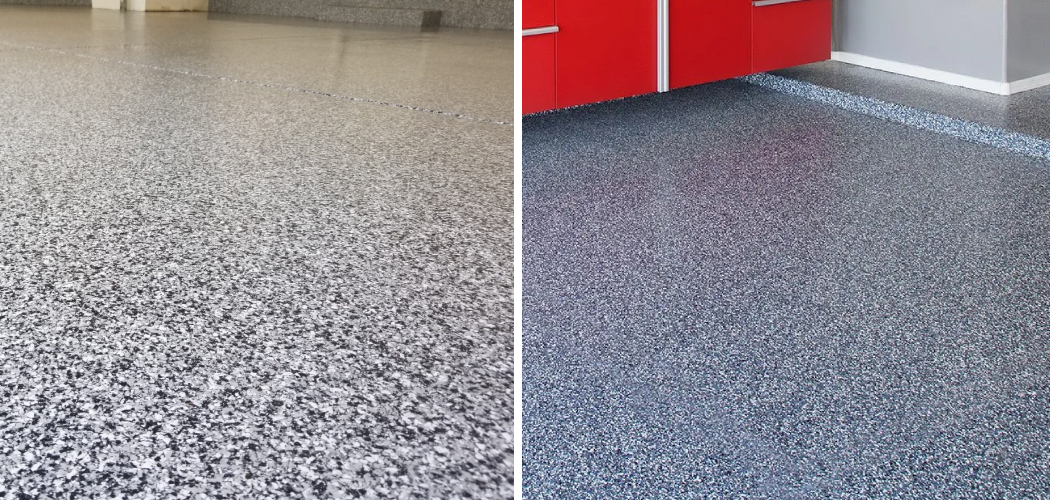Slip and fall accidents can occur in any environment, but they are especially dangerous when they happen at home or on commercial property. Epoxy floors not only provide increased slip-resistance but also enhance the overall look of a space with various custom color options available for added aesthetic appeal.

However, it’s essential to make sure your epoxy floor coating is properly applied to ensure optimal slip resistance—read on for detailed instructions on how to make epoxy floor not slippery!
Our homes and other properties look beautiful when their floors are covered with an epoxy finish. However, it can be of no use if it isn’t functional and safe too. As such, it’s essential to ensure that your epoxy floor is non-slippery for maximum safety purposes from slips and falls.
This blog post will provide detailed information on how you can make your existing or newly installed epoxy floor not slippery by using the right type of coating materials along with the appropriate procedures. Read this blog post further for more details on how you can achieve a good balance between aesthetics and functionality in terms of having a safe yet attractive epoxy floor finish!
Why is It Important to Make Epoxy Floor Not Slippery?
1. To Avoid Slips and Falls
Epoxy floors can become slippery when wet, increasing the risk of slips and falls. The Occupational Safety and Health Administration (OSHA) recommends that all slip-resistant surfaces be at least .5 on the Static Coefficient of friction scale, which is the measure used to determine how slippery a surface is. Making your epoxy floor not slippery prevents serious injuries and reduces the chance of having to pay for related medical costs.
2. To Improve Safety
Making an epoxy floor not slippery is important because it can help improve safety in a given space. For instance, if you have an epoxy floor in your restaurant or retail store, making sure that it does not become too slippery when wet can help prevent customers from slipping and falling. This can help you avoid costly lawsuits, as well as ensure that customers feel safe while shopping or eating at your establishment.
3. To Maintain Appearance
Maintaining a non-slippery epoxy floor is important to maintain the appearance of your space. A slippery surface can quickly become damaged or stained, making it appear unappealing and reducing the aesthetic appeal of your space. Keeping it not slippery helps maintain the floors’ appearance and makes it look more attractive and inviting to guests or customers.
4. To Maximize Durability
Making sure that your epoxy floor does not become too slippery is important in order to maximize its durability. Slippery surfaces can wear down quickly, leading to costly repairs or replacements. Keeping it not slippery helps prevent damage and ensures that your floor lasts for years to come.
Making sure that your epoxy floor is not slippery is essential in maintaining a safe, attractive, and long-lasting surface.
10 Ideas on How to Make Epoxy Floor Not Slippery
1. Use Anti-slip Additives
Anti-slip additives can be added to the epoxy to make it less slippery. They are made of fine particles that provide an enhanced grip on the surface, making it safer for foot traffic. Also, the additives are available in a variety of colors to match the epoxy floor.
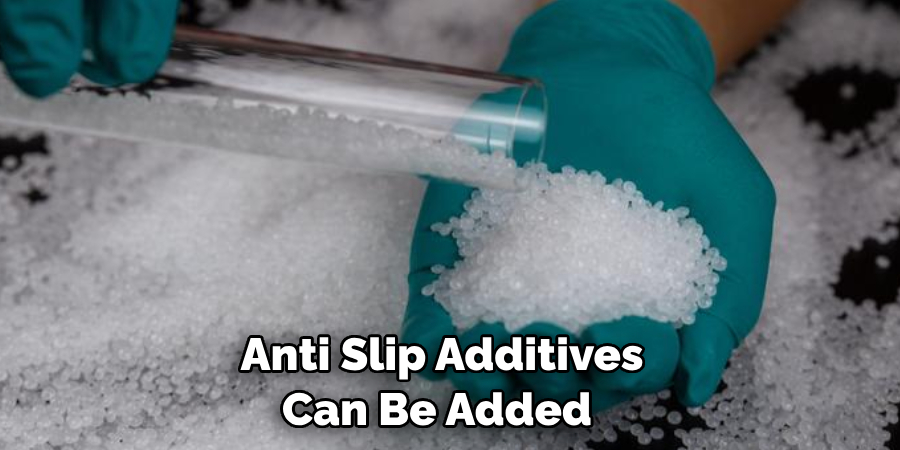
2. Add an Overcoat
Another solution is to apply an overcoat after the epoxy has dried and cured completely. This can be done using a polyurethane or urethane-based coating which provides a tougher surface that increases traction on the floor.
3. Increase the Texture
Creating a textured epoxy surface can help reduce the chances of slips and falls. This can be done by mixing sand or aggregate into the epoxy before it is applied, which will create a rougher surface with more traction. It’s recommended to use fine particles if you’re creating a textured floor because large chunks may become a tripping hazard.
4. Use a Color Flake System
If you’re looking for a more decorative finish, consider using color flakes with your epoxy flooring system. The color flakes provide additional traction due to their rough surface which is why they are often used in commercial settings where slips and falls are more likely to occur.
5. Install Non-slip Mats
If you need a quick and easy solution, consider installing non-slip mats in areas where slips and falls are more likely to occur. These mats are usually made of rubber or vinyl and can provide an extra level of safety for your epoxy floor. They should be installed on top of the existing epoxy layer, as they may not adhere directly to the floor.
6. Apply a Non-slip Finish
A non-slip finish is one of the quickest and most effective solutions for making your epoxy floor not slippery. This type of finish can be applied directly to the top of the epoxy after it has been laid and cured, creating a safe anti-skid surface.
7. Use a Specialized Resin
A specialized resin can also be used to create a non-slip surface on your epoxy floor. These resins are usually made of silicone or quartz particles which provide an enhanced grip on the flooring, making it safer for walking.
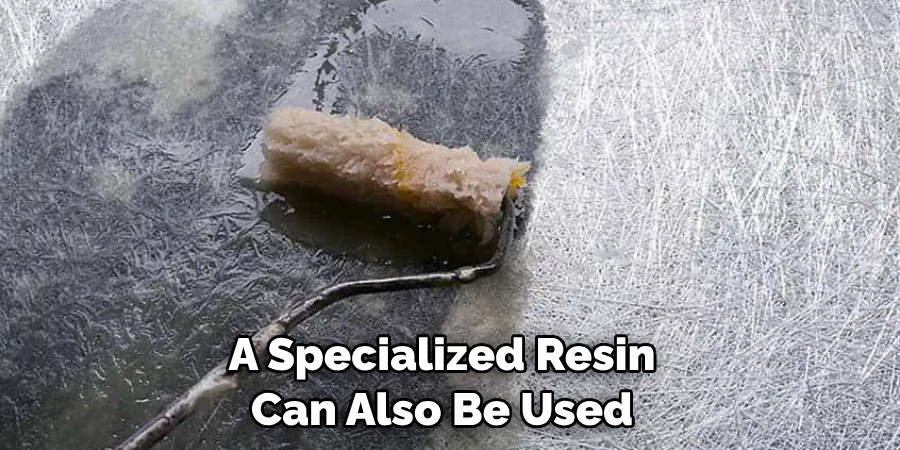
8. Use Sandpaper
Sandpaper can be used to increase the texture of your epoxy floor, making it less slippery. Be sure to use the fine grit sandpaper in order to create a rougher texture without creating an uneven surface that may lead to tripping hazards.
9. Paint with Anti-slip Paint
Anti-slip paint can be used to add a layer of grip on your epoxy floor. This type of paint can usually be found in a variety of colors, and it is often used in commercial settings to increase safety for customers and employees.
10. Add Carpet Tiles or Rugs
If your epoxy floor is located in an area where slips and falls are more likely to occur, consider adding carpet tiles or rugs for added traction. This can be a great way to reduce the chances of slips and falls while still providing a stylish look. Additionally, carpets or rugs can be easily removed and replaced if they become worn or dirty.
By using the above methods, you can make your epoxy floor not slippery and ensure it is safe for foot traffic in areas with high levels of activity. With the right solution, your epoxy floor can look great while providing an extra layer of safety. Make sure to take the time to evaluate your needs and choose the appropriate solution for your space.
Frequently Asked Questions
What Precautions Should I Take Before Starting The Process?
Before starting the process of making an epoxy floor not slippery, you should make sure that the surface is absolutely clean. You should remove all dirt and debris from the area, as any particles trapped in the coating can lead to a slippery finish. Additionally, you may want to use a degreaser or solvent to remove any oils, waxes, and grease that may be present. This will ensure the best results when applying the coating to the floor.
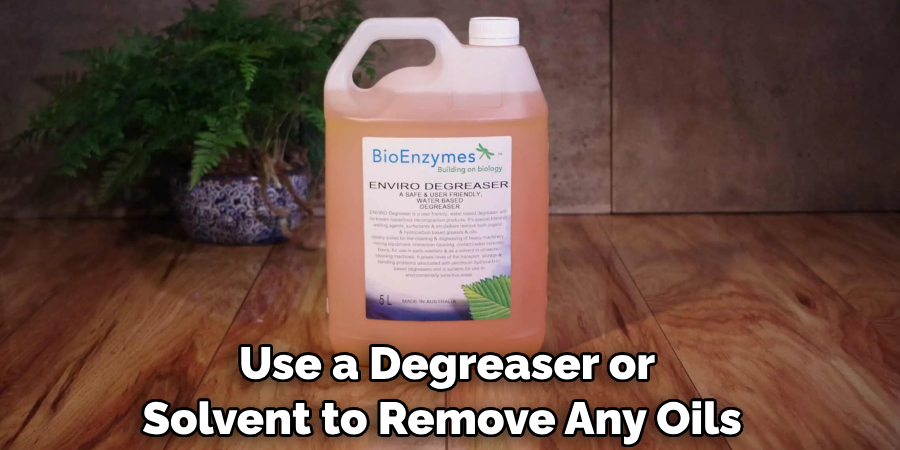
What Are The Benefits of an Anti-Slip Coating?
Applying an anti-slip coating to your epoxy floor can help prevent slips and falls due to slippery surfaces. This will help you keep your family and guests safe. Additionally, these coatings can provide extra grip to the surface, which is great for areas that may be prone to moisture or dampness. The anti-slip coating will also help protect the epoxy floor from scratches and other types of damage.
Can I Apply The Coating Myself?
Yes! Anti-slip coatings can be easily applied by individuals using simple application tools such as a roller, brush, or sprayer. However, if you are unsure of the process it is recommended that you hire a professional to ensure that the coating is applied correctly and evenly. Additionally, make sure you read all instructions carefully before beginning the application process in order to get the best results.
What Is The Best Way To Maintain An Epoxy Floor With Anti-Slip Coating?
Once the anti-slip coating has been applied to your epoxy floor, it is important to make sure that you maintain the surface properly. Regular cleaning with a mild detergent and water will help keep the floor looking great and ensure that the protective coating stays in place. Additionally, you should avoid using harsh chemicals or abrasive cleaners as these can damage the coating and lead to a slippery surface.
Making sure that your epoxy floor is not slippery is essential for the safety and protection of your family and guests. Fortunately, with the right preparation and application process, it is easy to make an epoxy floor not slippery by applying an anti-slip coating. By taking the proper precautions and following manufacturer instructions, you can easily make your floors safer for everyone.
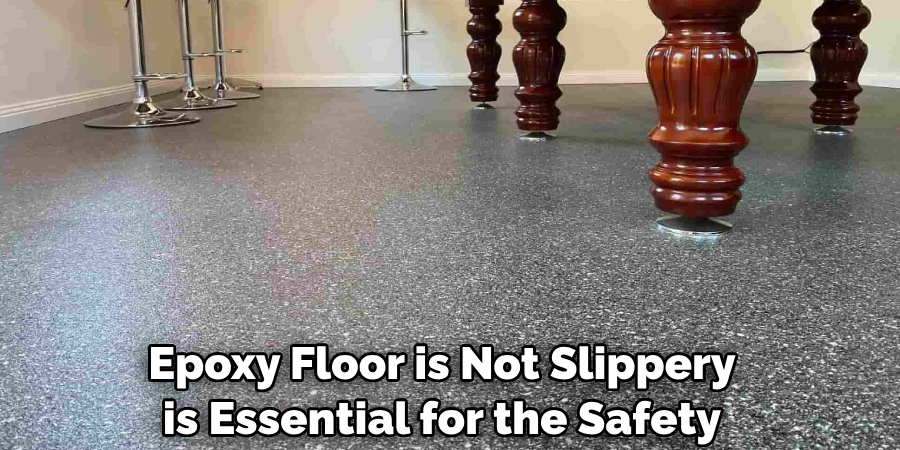
Conclusion
Overall, creating an anti-slip epoxy floor is a great idea to help keep you and your family safe. With the right materials and techniques, you can make the epoxy floor not slippery without compromising its aesthetic integrity. It’s important to know what products to use, as some may cause more slippage than others.
Additionally, you should also ensure that any chemical agents used are suitable for epoxy floors. Finally, when in doubt, enlisting the services of an experienced professional to do the job is always a wise choice. After all, prevention is better than cure. Step up your safety game and use our advice on how to make epoxy floor not slippery today!
